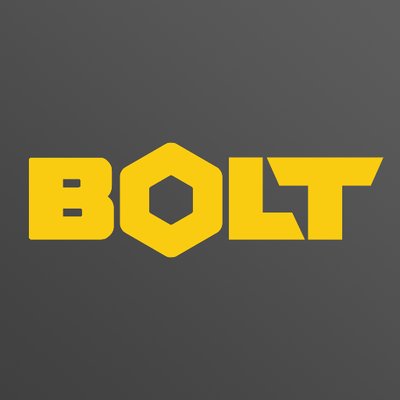
This is Part 2 of a three part series. If you missed Part 1, check it out here: Part 1: Founders and Culture or continue on to Part 3: Management and Scale if that’s more relevant for you.
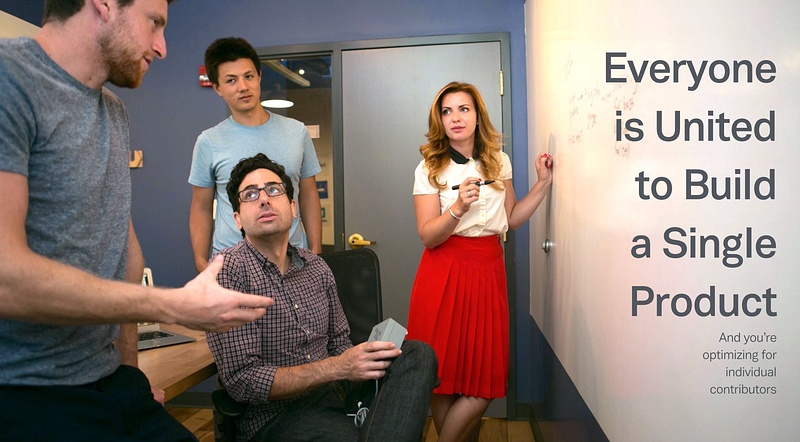
In the very early days of getting your first product out, a hardware “startup” is less of a company and more of a collection of people focused on building a single product. Every single person you bring around the table should be individually and directly adding value to the product.
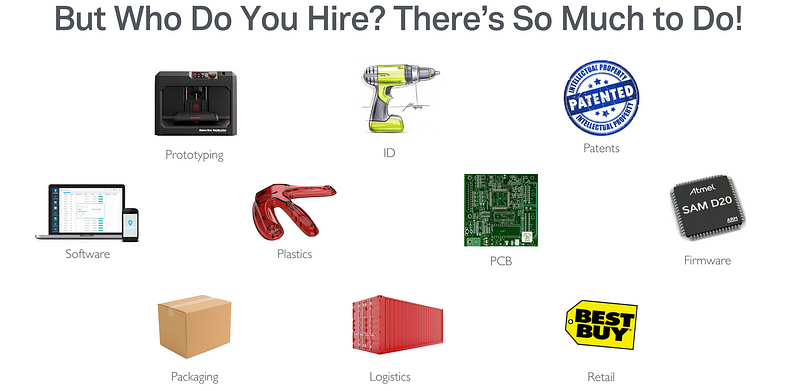
One of the big differences that separates software and hardware startups is the range of expertise needed to bring products to market. While many SaaS startups can launch a product with one or two people, hardware startups typically need 5–8 people and many months to get to a product ready for manufacturing. With a limited budget, how do you figure out who you should hire?
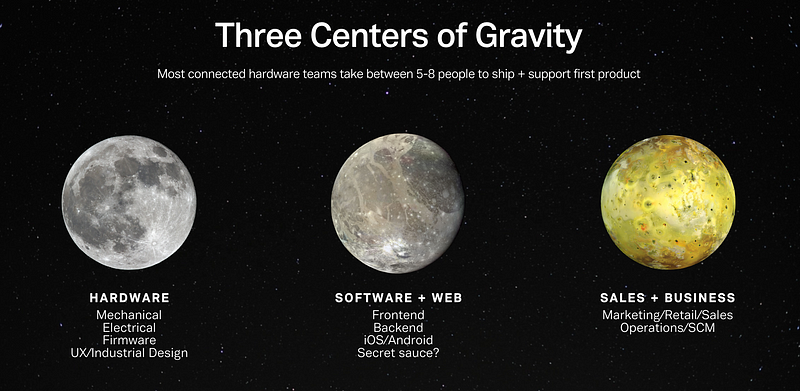
The work of early hardware startup hires tends to orbit one of three centers of gravity: Hardware, Software/Web, and Sales/Business:
- Hardware — humans focused on building the physical device and the embedded software that runs on it.
- Software/Web — humans focused on building the software/mobile experience; humans focused on things like data science, machine learning, or the company’s “secret sauce” often fit here too.
- Sales/Business — humans (often including the CEO) focused on getting people to buy and use the product.
Recognizing these three centers of gravity tends to clarify hiring priorities.
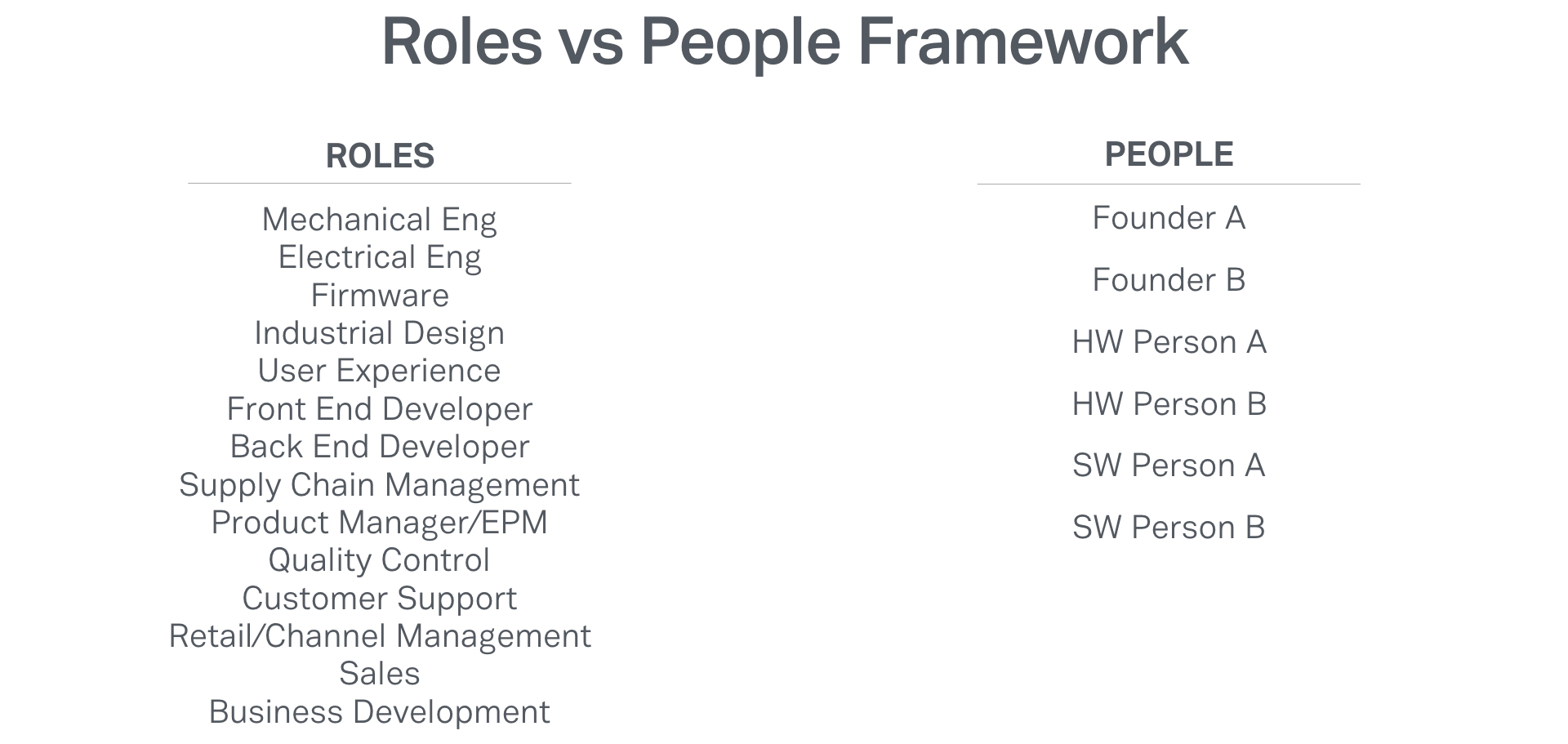
The next step is to figure out what functions are missing from the current team. I’ve found a “roles vs people” framework quite helpful. Make a two-column chart, one column with all the roles you need to build your first product, and one column with the current list of names on your team. Connect the roles to the people that can reasonable handle them today.
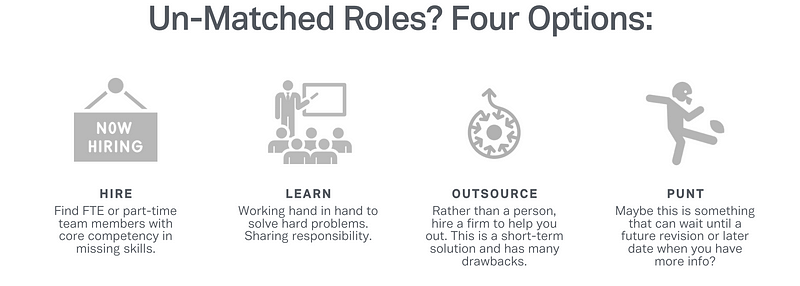
Any roles that don’t have a person assigned to them are deficiencies you have to account for. You have four options to fill these gaps:
- Hire a full time or part time person to bring competency in-house
- Learn how to do the skill/function yourself
- Outsource the skill/function to another firm or consultant that you pay on an hourly or project basis
- Punt the task until a future product release
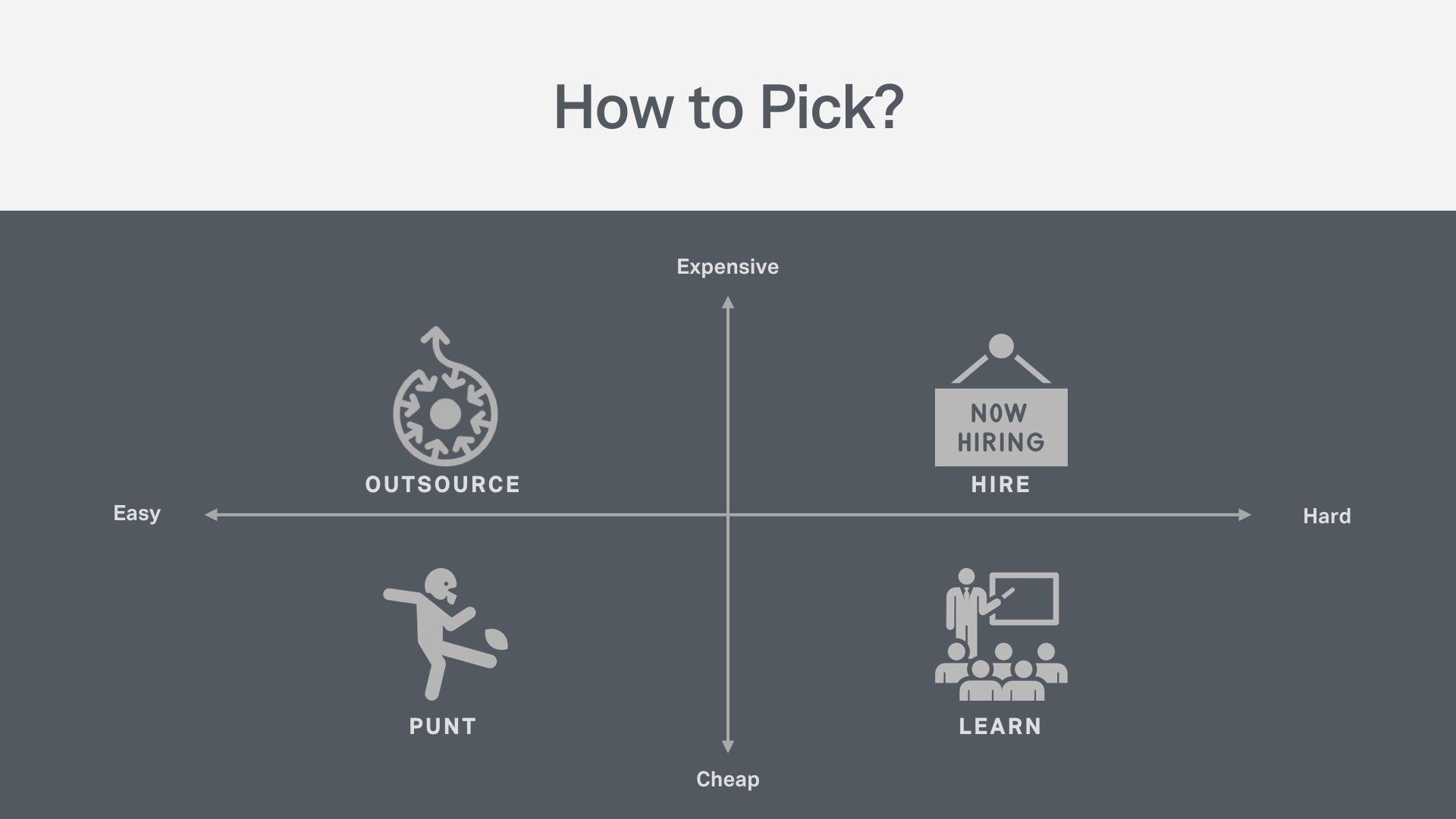
Deciding which way deficiencies get solved is a challenge. I tend to think about the four options in two camps:
High Value Options
- Hire — by far to most common answer to addressing critical skills gaps. Also the most difficult.
- Learn — the second best option (and the best for cash-strapped companies). This is also very challenging to do well.
Low-Value Options
- Outsource — having someone else build your product for you usually is the most expensive way to solve skill gaps but it’s also not adding core value to the company. However, it’s fast and sometimes adds immediate credibility.
- Punt — simply not doing something obviously doesn’t add value and is “free” but you often pay for it months or years later.
Let’s shed a bit more light on each of these options and how to exercise them with care:
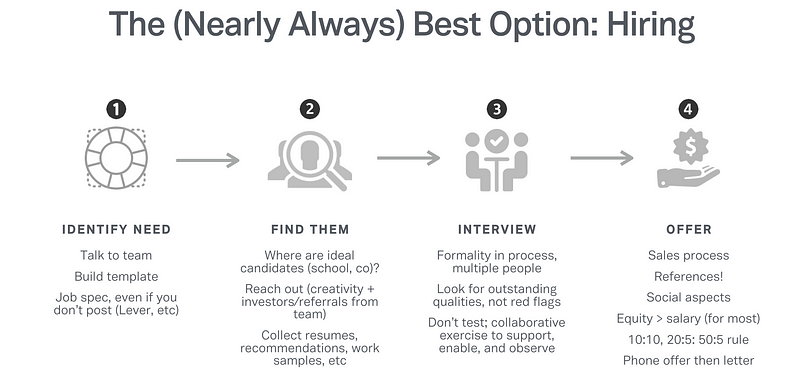
Hiring is nearly always the highest-value option for a startup. The reason for this is simple: the value of an early-stage company is directly related to it’s ability to repeatably ship products people want. Building this ability inside the company with full-time hires vs. outside the company with consultancies/contractors maximizes enterprise value.
1. Identify Need
- Determining what specific roles, titles and qualities you’re looking for is usually best done by talking with your existing team (founders, employees, investors, advisors, etc) to gather information about the need you’re trying to fill.
- Build a template or “persona” of the person you need, ideally by referencing other people at other companies. In my experience, focusing less on formal requirements and more on archetype is better at this stage. For example, look at early employees of a company you admire (maybe if you’re building a wearable fitness tracker, look at Fitbit) and try to figure out who among the early team had a similar role to what you need.
- Many people focus on writing a formal job description. While this is helpful for the founders, almost all great early hires come through referrals and networking, not job-boards like Indeed and Monster. When writing a description, spend time thinking about how to get a candidate excited about your product and vision.
2. Find Candidates
- Where are people that match your persona(s) working today? How do you get in contact with them? How do you get them excited to leave their current job?
3. Interviewing
- Build a process to interview consistently. While small companies tend not to overly mechanize their process, standardizing things like the questions you ask, order of people interviewing from your team, and the work you ask candidates to do will help with fair assessment.
- Young startups should typical select for strong positive signal (something exceptional in one dimension) rather than avoiding negative signal (red flags).
- Most great employees don’t do well performing on a whiteboard in front of their new potential boss. Place candidates into a more life-like scenario with other teammates and see how they work with others.
4. Offer
- Ensure you get good references (both on list and off list) and talk to everyone that interviewed the candidate before making a decision.
- An offer is not a written letter with a salary and equity amount! It’s a long process of selling the candidate and convincing them why your company is the best place for them to work. Don’t make the mistake of sending an offer letter and crossing your fingers.
- When your company is less than 50 or so people, optimize for employees focused on equity rather than cash. This is harder with certain roles (especially sales).
- With equity, use the 10:10, 20:5, 50:5 rule where the first 10 people get 10% of the company (in aggregate), the next 20 people get 5%, and the next 50 get 5%.
- When giving an offer, walk them through it over the phone or in person and only send once you know they’ll sign it.

One of my favorite team building metaphors (courtesy of my partner Axel) is building brick walls vs stone walls:
Most big companies build teams the same way a mason builds brick walls: neat, orthogonal job descriptions create a nice, organized wall. In reality, hiring for a startup is like building a stone wall where you take the awkward, misshapen stones of the founders and find a similarly misshapen (but complementary) stone that fits nicely between the others. Then you find another jagged, complex stone that fits into the new shape and repeat the process. You still wind up with a wall, but it’s very different than an organized brick wall.
Another excellent tip is “hire for slope, not y-intercept.” Unfortunately, most interviewing is setup to identify people that know more than all other candidates (Candidate A at T=0). The best startups hire people that might have fewer qualifications and formal knowledge but are hungry and learn quickly (Candidate B). These types of people tend to outperform their counterparts over time given the right environment. Nearly all of the best people I’ve been fortunate enough to work with are Candidate Bs.

For my last company I often needed good, young mechanical engineers. My friend Matt Page taught me a valuable lesson in finding people creatively: rather than going to meetups or trying to figure out how good someone is from a resume, Matt suggested I teach SolidWorks classes at 3 local colleges (for free). This led me to a treasure trove of excellent employees and consultants over the years. Nearly every role has a few secret tricks to find great people. Use them!
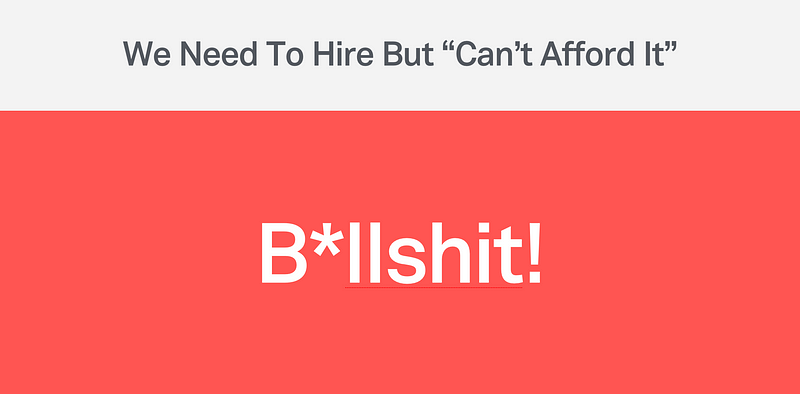
Something I hear often from startups is “we need to hire but can’t afford a really good person.” I call bullshit! Don’t use this excuse as a crutch to hire B-level (or worse) people. There are often alternative ways to get an excellent person on-board:
- Equity (the most powerful tool you have)
- Advisory or board-type role that grows into a full-time hire
- Raising more money from investors
- Figuring out alternative salary structure based on sales or other performance metrics paid over time
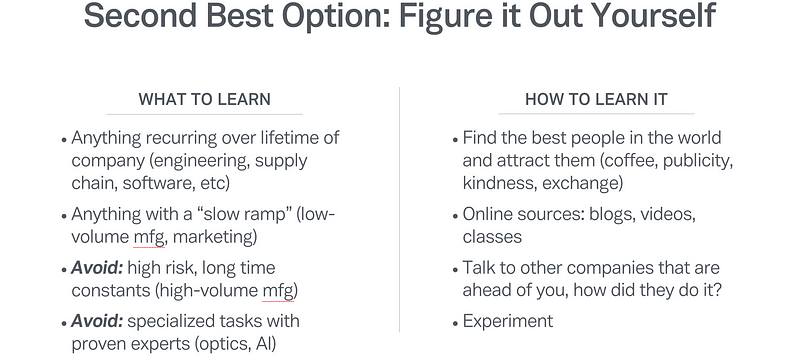
The next best option (of the four we outlined earlier) is adding that skill or competency by learning how to do it yourself. This works well for certain types of tasks (such as engineering and software) and works much less well for things that are dangerous or specialized (like high-volume manufacturing or optics).
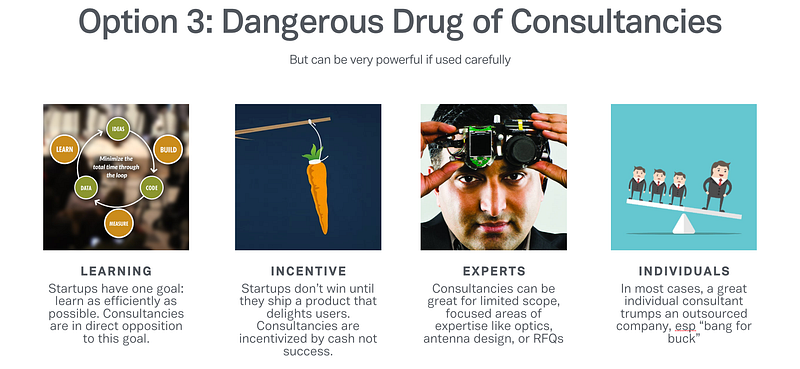
The third option for filling missing skill gaps in the team is outsourcing the solution to someone else. This can be very powerful for projects of limited scope or highly specialized expertise (antenna design) but is often sub-optimal. Learning how to quickly translate customer needs into a sellable product is the essence of a startup. By hiring a big consultancy or design firm to implement your product, you’re giving away this learning to someone else.
Incentives are also misaligned. Consultancies are incentivized by cash, not success of a product. When in desperate need of additional resources, a really good independent contractor is nearly always a better option than a big firm “solving the problem” for you.

The key with outsourced solution providers is to “keep the gravity” around the company such that the organization learns how to solve this problem both now and for the future.
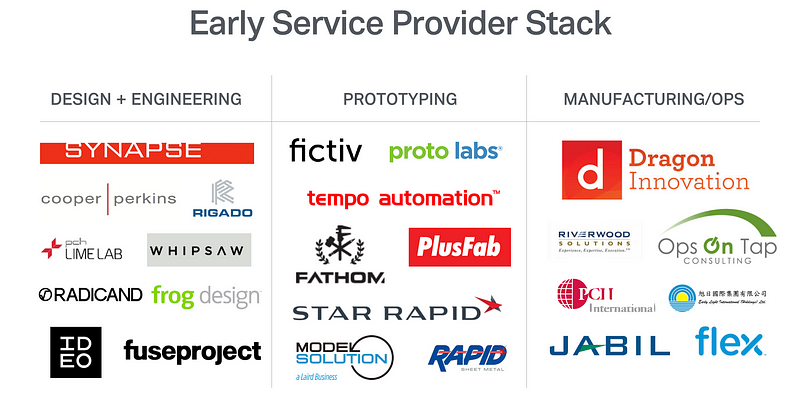
With the aforementioned caveat, I am often asked for suggestions of service providers that can help during the individual contributor phase of company building. We’ve found a few companies tend to work best for startups during the three main junctures of development/production as shown above.

Each stage has a few “tiers” of service providers that have very different costs and engagement models. These costs have massive ranges which are very hard to pin down, so your personal mileage may vary.
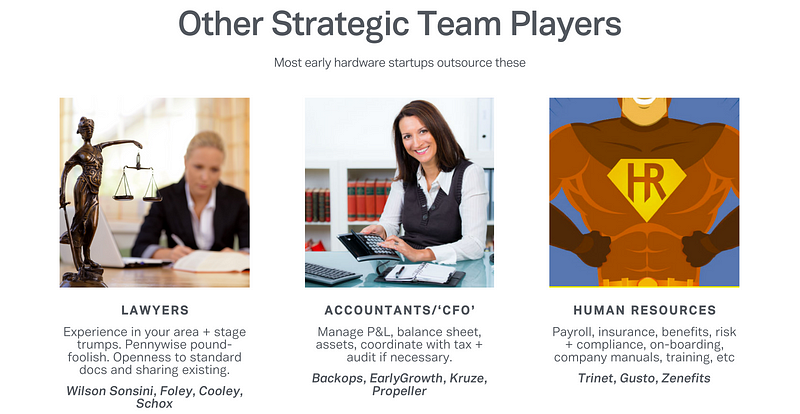
There are a few key roles that are almost always outsourced at this stage of company building:
- Lawyers — Make sure to get references from other startup founders you know. Wilson Sonsini, Foley, and Cooley tend to be very common for tech startups in the US.
- Accountants —Many of our companies lean on Backops, Propeller, or Kruze (or a long list of small service shops in their local area.)
- HR — A slew of modern startups are around to help with this, most commonly Trinet and Gusto.

Last but not least in our four options for solving skill gaps: punting. This is an underutilized option. When wielded well, waiting to solve a skill gap or add a feature can save a startup significant time and money.
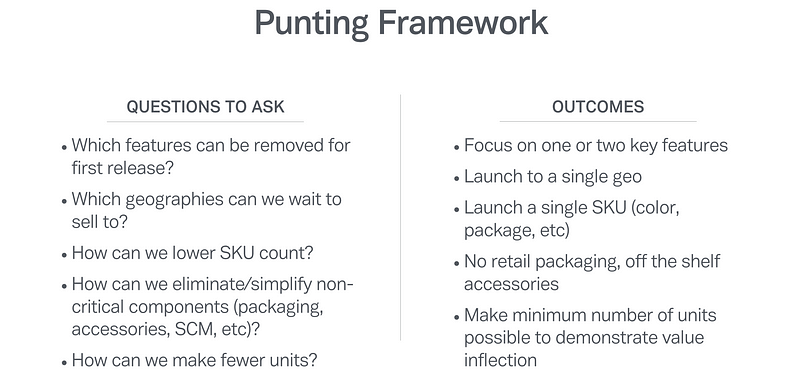
Finding ways to have fewer problems can greatly increase your ability to execute well on the task at hand. Nearly every hardware startup wishes they built fewer things during their first product development cycle. You can reduce your team’s workload by asking yourself tough questions about which features can be removed or how to sell fewer SKUs.
Now that we’ve built a team that can build and ship a product, it’s time to think about structuring the company for long-term growth. Check out Part 3: Management and Scale.
Ben Einstein was one of the founders of Bolt. You can find him on LinkedIn.
Bolt invests at the intersection of the digital and physical world.
